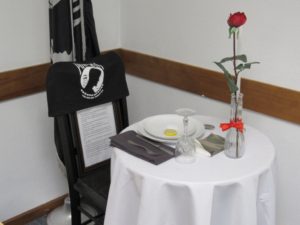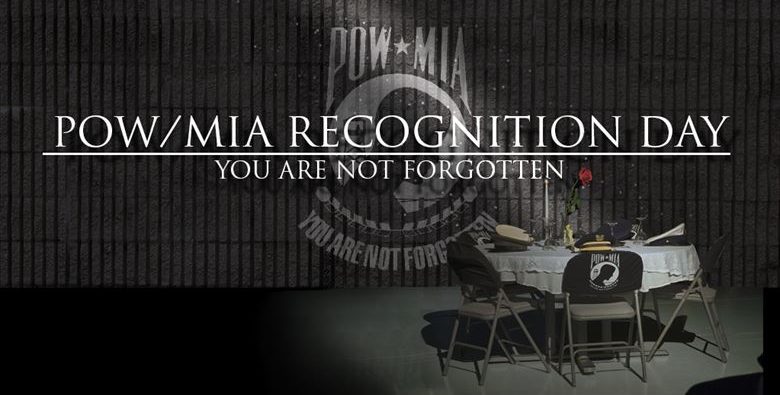Full accounting for all Prisoners of War and Missing in Action is an important mission to the Veterans of Foreign Wars. Through the National Security & Foreign Affairs (NSFA) program, the VFW encourages the U.S. government to continue its POW/MIA accounting efforts, and is directly engaged with other nations and their veterans’ groups to urge their cooperation and assistance to obtain information about missing Americans. VFW national officers make annual trips to Pacific, Asian and European countries where they always meet with senior host-country officials to stress the importance of conducting investigation and recovery operations, as well as gaining access to documents and archival research facilities.
National POW/MIA Recognition Day was established in 1979 through a proclamation signed by President Jimmy Carter. Since then, each subsequent president has issued an annual proclamation commemorating the third Friday in September as National POW/MIA Recognition Day.
A national-level ceremony is held on every National POW/MIA Recognition Day. Traditionally held at the Pentagon, it features members from each branch of military service and participation from high-ranking officials.
In addition to the national-level ceremony, observances of National POW/MIA Recognition Day are held across the country on military installations, ships at sea, state capitols, schools and veterans’ facilities.
No matter where they are held, these National POW/MIA Recognition Day ceremonies share the common purpose of honoring those who were held captive and returned, as well as those who remain missing.
— Defense POW/MIA Accounting Agency; https://www.dpaa.mil/Families/Posters.aspx
Here at home, we honor and remember our nation’s Prisoners of War and Missing in Action with our modest table and a small ceremony on the third Friday in September every year.

At the front of the room a round table is placed, with a white tablecloth, and it has been set with a complete china place setting with silverware. A glass vase, with a red ribbon tied at the base, holds a single red rose. A Bible is placed on the table. On the dinner plate is a slice of lemon, and on the bread plate is a small pile of salt. The chair at the table is covered with the POW/MIA chair cover.
“At the front of the room, you will notice the table, which is set to honor our missing veterans. This Honors Ceremony symbolizes that they are with us, here in spirit. Many of those here in this room were young when they were sent into combat, however, all Americans should never forget the brave men and women who answered our nations call and served the cause of freedom. A moment of silent prayer is offered for those not with us today…”
The meaning of the items on this special table is now explained:
“The table is round – to show our everlasting concern for our missing men.
The tablecloth is white – symbolizing the purity of their motives when answering the call of duty.
The single red rose, displayed in a vase, reminds us of the life of each of the missing, and their loved ones and friends of these Americans who keep the faith, awaiting answers.
The vase is tied with a red ribbon, a symbol of our continued determination to account for our missing.
A slice of lemon on the bread plate is to remind us of the bitter fate of those captured and missing in a foreign land.
A pinch of salt symbolizes the tears endured by those missing, and their families who seek answers.
The Bible represents the strength gained through faith to sustain those lost from our country, founded as one nation under God.
The glass is inverted – to symbolize their inability to share this morning’s toast.
The chair is empty – for they are not with us.”
A toast is then offered to honor America’s Prisoners of War and Missing in Action, and to the success of our efforts to account for them.

